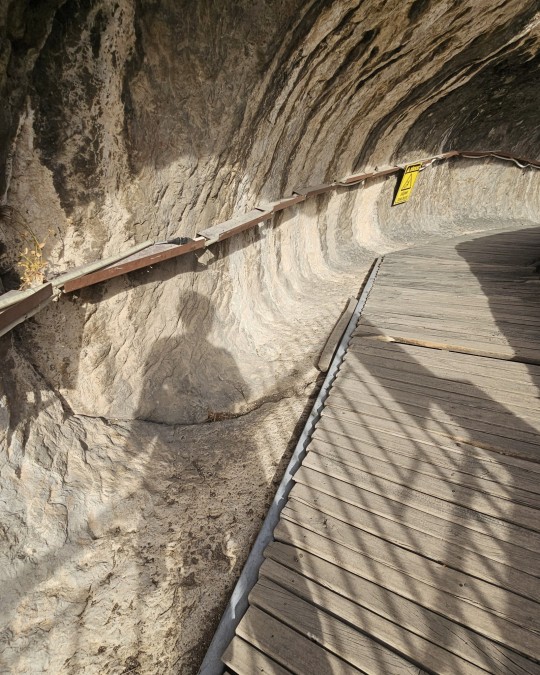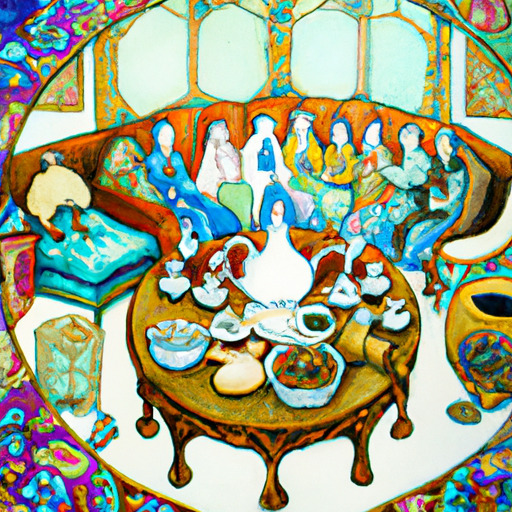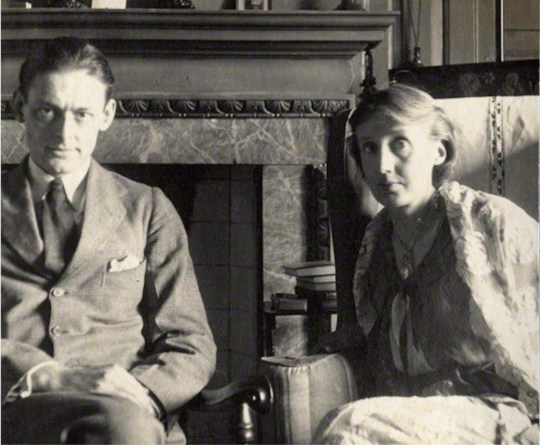#tseliot
Explore tagged Tumblr posts
Text
youtube
T. S. Eliot on God & Civilisation.
2 notes
·
View notes
Text

Basit bir hayat yaşamanın yolunu bulmak hayatın en yüce karmaşalarından biridir.
( T.S. Eliot )
.
.
.
.
.
[ Amasya, 04.11.2023 ]
12 notes
·
View notes
Text

2 settembre 1932, casa Woolf: Thomas, Virginia e Vivienne
https://www.pangea.news/virginia-woolf-thomas-eliot-amicizia/
#tseliot#eliot#t s eliot#thomas eliot#thomas stearns eliot#virginia woolf#tseliot and virginia woolf#friendship#writers#modernism#photo
4 notes
·
View notes
Text
Straight from the studies
T.S. Eliot’s The Waste Land and Its Relation to Dante’s Purgatorio
T.S. Eliot’s The Waste Land is a cornerstone of modernist poetry, and its intricate relationship with Dante’s Purgatorio reveals a profound dialogue between the medieval and the modern. Eliot’s poem is steeped in allusions to Dante’s work, creating a rich tapestry of intertextuality that deepens its exploration of disillusionment, spiritual desolation, and the quest for redemption. The opening line, “April is the cruellest month,” immediately sets a tone of irony and disenchantment, contrasting sharply with Dante’s depiction of Hell, where time and seasons hold no meaning. This inversion signals the fragmented, chaotic nature of the modern world, where traditional sources of meaning and renewal have been upended. Eliot’s use of April—typically a symbol of rebirth—as a cruel force underscores the spiritual barrenness that pervades the poem, a theme that resonates with Dante’s portrayal of souls trapped in the infernal depths.
Eliot’s journey through the wasteland of modern life mirrors Dante’s descent into the circles of Hell, both in its fragmented structure and its exploration of moral decay. The disjointed, non-linear narrative of The Waste Land reflects the disorientation of a world stripped of coherence and purpose, much like the souls Dante encounters in Hell. This structural parallel is reinforced by Eliot’s vivid imagery of desolation, which evokes Dante’s barren, lifeless landscapes. The barrenness of Eliot’s wasteland—its “stony rubbish” and “dead trees”—parallels the spiritual emptiness of Dante’s Hell, where souls are condemned to wander in despair. The river that flows through The Waste Land can be seen as an allusion to Dante’s Styx, a boundary between the living world and the realm of spiritual anguish, symbolizing the transition into a state of existential and moral crisis.
Central to both works is the figure of a guide who illuminates the path through suffering. In The Waste Land, Tiresias, the blind prophet who witnesses the decay of society, serves a role akin to Dante’s Virgil. Both figures act as mediators between the human and the divine, offering insights into the nature of suffering and the possibility of redemption. Tiresias’s presence underscores the poem’s exploration of human frailty and the cyclical nature of decay, while also hinting at the potential for renewal. This theme of redemption is central to both works: just as Dante’s journey through Hell ultimately leads to hope and salvation, Eliot’s depiction of despair is tinged with a longing for renewal, suggesting that even in the midst of chaos, the search for meaning persists.
Specific sections of The Waste Land further highlight its engagement with Dante. “The Burial of the Dead” evokes themes of death and rebirth, echoing Dante’s encounters with the dead in Hell, while “What the Thunder Said” explores spiritual longing and the quest for redemption through its imagery of water and thirst, paralleling Dante’s themes of purgation and renewal. Eliot’s use of these motifs underscores the poem’s insistence on the possibility of transcendence, even in a world seemingly devoid of hope.
Symbology in The Waste Land
The Fisher King
The Fisher King is a central figure in Arthurian legend and the Grail mythos, and his presence in The Waste Land is deeply symbolic. In the legend, the Fisher King is the guardian of the Holy Grail, but he is wounded and unable to fulfill his role, causing his kingdom to fall into a state of decay and barrenness—a literal wasteland. Eliot draws on this myth to reflect the spiritual and cultural malaise of the modern world. The Fisher King’s wound symbolizes a deeper, collective wound in humanity, one that stems from a loss of faith, meaning, and connection to the divine. His suffering mirrors the desolation of Eliot’s wasteland, where individuals are disconnected from each other and from spiritual truths. The quest to heal the Fisher King parallels the search for redemption in The Waste Land, suggesting that only through addressing this spiritual wound can the wasteland be restored to fertility and life.
Allusions to the Grail
The Holy Grail is a subtle yet significant presence in The Waste Land, symbolizing spiritual fulfillment and the quest for meaning. The Grail myth is most explicitly evoked in the Fisher King narrative, where the wasteland’s restoration depends on the healing of the king and the recovery of the Grail. The poem’s fragmented structure and its themes of spiritual desolation can be seen as a modern retelling of the Grail quest, where the seeker must navigate a chaotic and barren world in search of redemption. The imagery of water and thirst in sections like “What the Thunder Said” further alludes to the Grail, as water is often associated with the Grail’s life-giving and purifying properties. These allusions reinforce the poem’s engagement with Dantean themes, as both the Grail quest and Dante’s journey through Hell and Purgatory are ultimately about the search for spiritual renewal and salvation.
The Tarot and the Sibyl
One of the most striking symbolic elements in The Waste Land is the use of the Tarot, particularly in the opening section, “The Burial of the Dead.” The cards mentioned—the drowned Phoenician Sailor, the Belladonna (the Lady of the Rocks), and the Hanged Man—serve as archetypal symbols of death, transformation, and spiritual stagnation. The Hanged Man, for instance, is traditionally associated with sacrifice and renewal, themes that resonate with both the Fisher King myth and Dante’s journey through Hell and Purgatory. Additionally, the Sibyl of Cumae, who is referenced in the epigraph, embodies the paradox of immortality without eternal youth, a symbol of the spiritual decay that pervades the poem. Her plight mirrors the existential despair of Eliot’s modern wasteland, where life persists but lacks meaning. This connection to ancient prophecy and myth reinforces the poem’s engagement with timeless questions of suffering and redemption.
The Desert and the Waste Land
The barren desert imagery in The Waste Land is a powerful symbol of spiritual desolation, echoing Dante’s depiction of the souls in Purgatory who endure suffering in their quest for purification. The desert represents a place of testing and trial, where individuals confront their innermost fears and failings. In Eliot’s poem, the wasteland is not just a physical space but a metaphor for the modern world’s moral and spiritual emptiness. This imagery parallels Dante’s Purgatory, where souls must traverse a landscape of hardship to achieve redemption. The desert’s aridity contrasts with the life-giving potential of water, another recurring symbol in the poem, emphasizing the tension between despair and hope.
The Thunder and the Voice of God
In the final section, “What the Thunder Said,” the sound of thunder is a multifaceted symbol that draws on Hindu mythology from the Upanishads. The thunder’s voice, which utters the commands “Datta” (give), “Dayadhvam” (sympathize), and “Damyata” (control), represents a call to spiritual awakening and ethical action. This moment of divine communication can be linked to Dante’s encounters with divine voices in Purgatorio, where the souls are guided by celestial figures toward redemption. The thunder’s commands suggest a path out of the wasteland, emphasizing the need for compassion, self-discipline, and generosity—virtues that are central to both Eliot’s and Dante’s visions of spiritual renewal.
The City and Urban Decay
The city is a recurring symbol in The Waste Land, representing the fragmentation and alienation of modern life. London, in particular, is depicted as an “unreal city,” a place where individuals are disconnected from each other and from the natural world. This urban decay mirrors Dante’s vision of Hell, where the souls are trapped in a chaotic, disordered landscape. The city’s lifelessness and mechanization reflect the spiritual emptiness of the modern world, contrasting with the organic, cyclical renewal symbolized by nature. This duality of the city and the natural world underscores the poem’s exploration of humanity’s estrangement from both the divine and the earth.
The Phoenix and the Fire Sermon
The Phoenix, a mythical bird that dies and is reborn from its ashes, is a potent symbol of regeneration and renewal. In The Waste Land, the imagery of fire in “The Fire Sermon” evokes both destruction and purification, echoing the Phoenix’s cyclical process of death and rebirth. This theme of fire as a transformative force can be linked to Dante’s Purgatorio, where souls are purified through fire before ascending to Paradise. The Fire Sermon also draws on Buddhist teachings, emphasizing the need to transcend worldly desires—a message that aligns with Dante’s emphasis on spiritual purification. The interplay of fire and water in the poem creates a dynamic tension between destruction and renewal, reflecting the dual nature of the human quest for meaning.
The Chapel Perilous
The Chapel Perilous, a symbol drawn from Arthurian legend, appears in the final section of The Waste Land as a place of trial and spiritual testing. In the Grail quest, the Chapel Perilous is a site where the knight must confront his fears and prove his worthiness. In Eliot’s poem, it represents the modern individual’s struggle to find meaning in a fragmented, chaotic world. This symbol can be linked to Dante’s journey through Purgatory, where souls must endure trials to achieve redemption. The Chapel Perilous underscores the poem’s exploration of the human condition, emphasizing the challenges of the spiritual quest and the potential for transcendence.
Conclusion : The Use of Myth
Eliot’s use of myth in The Waste Land—drawing on figures like the Fisher King, Tiresias, and the Grail quest—universalizes the poem’s themes, connecting the fragmented modern experience to timeless archetypes and narratives. This mythic framework strengthens parallels to Dante’s Purgatorio, where spiritual crisis and redemption are explored through a Christian mythological lens. The rich symbology in The Waste Land—from the Tarot and the desert to the thunder and the Chapel Perilous—deepens its connection to Dante, creating a layered, universal text that resonates with the timeless quest for meaning amidst despair. Together, myth and symbolism underscore the cyclical nature of suffering and the possibility of transcendence, offering a profound meditation on the human condition and the search for redemption in a fractured world.
#TheWasteLand#TSEliot#Dante#Purgatorio#ModernistPoetry#SpiritualDesolation#Redemption#Mythology#Tiresias#FisherKing#GrailLegend#Intertextuality#Modernism#Hell#Styx#Despair#Renewal#Fragmentation#HumanCondition#Allusion#Symbolism#MoralDecay#AprilIsTheCruellestMonth#BurialOfTheDead#WhatTheThunderSaid#MedievalAndModern#ExistentialCrisis#CyclicalDecay#Transcendence
0 notes
Text

T. S. Eliot and Virginia Woolf, friends for over 20 years.
0 notes
Text

Find a new side of you with Travelarii.com 🌍✈️
0 notes
Text
Cities Within Us
Sabyasachi Nag talks to Aurora, Ontario, poet, Peter Taylor about his new poetry collection, Cities Within Us (Guernica Editions, 2024) Sabyasachi Nag: Huge congratulations on the publication of Cities Within Us (Guernica Editions, 2024). Can you explain how you settled on the title for the collection? Peter Taylor: The original title for this book was Cities of Ideas. My first book, Trainer,…

View On WordPress
0 notes
Photo

Turn things you've always wanted to do, into things you've done. https://www.quotenova.net/authors/t-s-eliot/qgakgg
0 notes
Text
Retro causality and the Advanced and Retarded Wave Junction: TS Eliot, Jim Morrison and Joni Mitchell

View On WordPress
0 notes
Text
Deities of Turkic Mythology discuss The Waste Land (T.S. Eliot)
Title: Deities’ Book Club: The Waste Land Discussion INT. COZY ROOM – DAY The room is filled with rich tapestries, comfortable armchairs, and a large wooden table adorned with a teapot, tea cups, and various cakes. The deities of Turkic Mythology gather around the table, engaged in animated discussion. DEITY 1, a wise and serene deity, holds a copy of “The Waste Land” by T.S. Eliot, and begins…

View On WordPress
#Catch22#CormacMcCarthy#CulturalDecay#DeitiesBookClub#Despair#GabrielGarciaMarquez#HermannHesse#JosephHeller#literature#Myth#OneHundredYearsOfSolitude#PostWorldWarISociety#redemption#Renewal#Siddhartha#Spirituality#TheRoad#TheWasteLand#TheWasteLandDiscussion#TSEliot#TurkicMythology
0 notes
Text
“Half the harm that is done in this world is due to people who want to feel important. They don't mean to do harm; but the harm does not interest them. Or they do not see it, or they justify it because they are absorbed in the endless struggle to think well of themselves.”
#thomas stearns eliot poem#thomas stearns eliot portrait#thomas stearns eliot#thomas stearns eliot play#the cocktail party#the cocktail party play#the cocktail party thomas stearns eliot#the cocktail part t s eliot#the cocktail party quote#the cocktail party quotes#t s eliot#tseliot#t. s. eliot#ts eliot#t.s. eliot#thomas s eliot#thomas s. eliot#quote#quotes#play quote#play quotes#play#drama#theatre#plays#classic#classics#classic literature#literature#theater
1 note
·
View note
Text

2 notes
·
View notes
Text
User tseliot-1 is creepy as fuck, just logged in to find he’s gone and liked every single personal post of mine (70+ posts) after he messaged me a week ago and I asked him to leave me alone, please be warned.
2 notes
·
View notes
Text

18 giugno 1922, T S Eliot a casa di Virginia Woolf per la lettura del The waste land
#the waste land#waste land#la terra desolata#la terra guastata#tseliot and virginia woolf#virginia woolf#t s eliot#thomas eliot#thomas stearns eliot#foto#photo#eliot#woolf
16 notes
·
View notes
Text
ts eliot pronounced "tseliot" like tsunami or tsuchinoko
7 notes
·
View notes
Text

Send from Sansgreet Android App. Sanskrit greetings app from team @livesanskrit .
It's the first Android app for sending @sanskrit greetings. Download app from https://livesanskrit.com/sansgreet
Thomas Stearns Eliot.
Thomas Stearns Eliot (26 September 1888 – 4 January 1965) was an American-born British poet, essayist, publisher, playwright, literary critic and editor. Considered one of the 20th century's major poets, he is a central figure in English-language Modernist poetry.
#sansgreet #sanskritgreetings #greetingsinsanskrit #sanskritquotes #sanskritthoughts #emergingsanskrit #sanskrittrends #trendsinsanskrit #livesanskrit #sanskritlanguage #sanskritlove #sanskritdailyquotes #sanskritdailythoughts #sanskrit #resanskrit #tseliot #poet #british #american #essayist #celebratingsanskrit #playwright #missouri #us #london #england #critic #harvarduniversity #oxford #mertoncollege
#greetingsinsanskrit#sanskritgreetings#sanskrittrends#trendsinsanskrit#livesanskrit#sanskrit#celebratingsanskrit#incredibleindia#indianarmy
0 notes